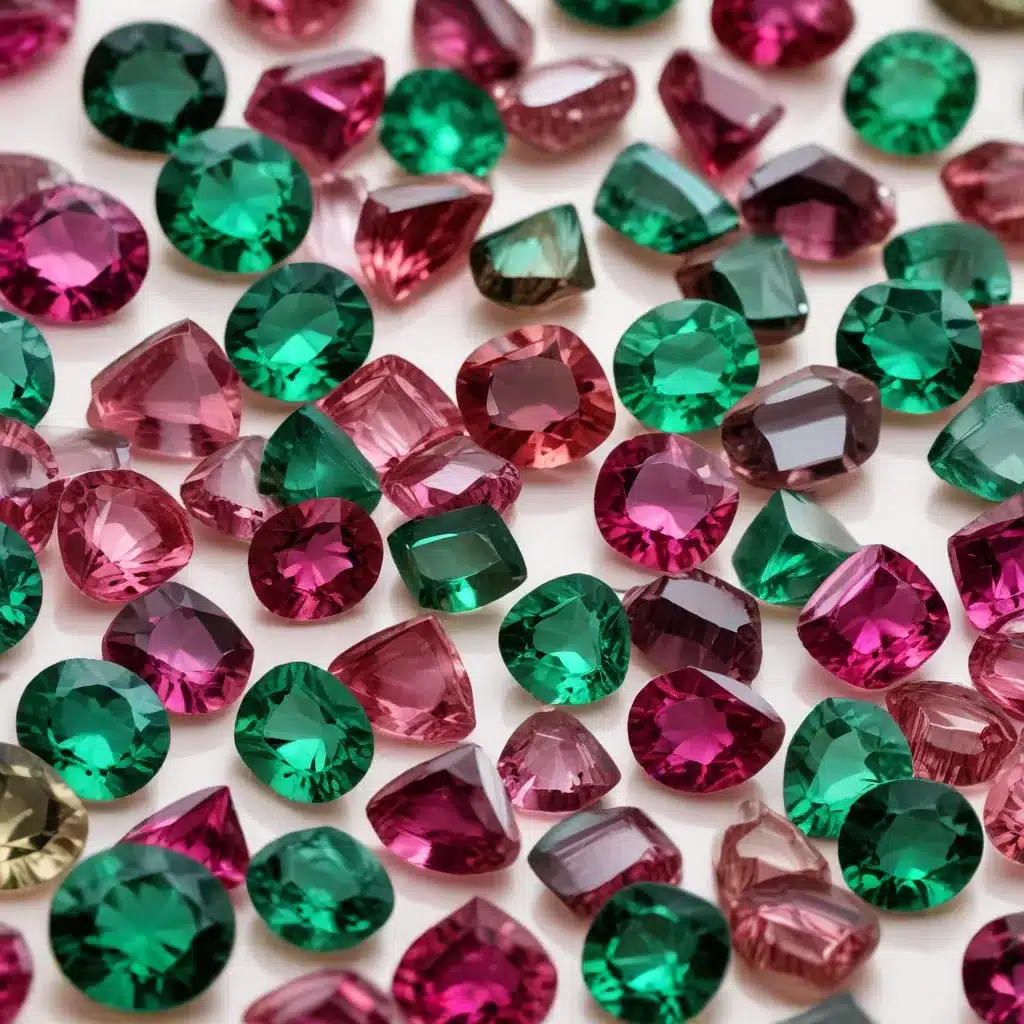
In the captivating world of gemstones, tourmaline stands out as a true chameleon, offering a dazzling array of hues that have enchanted jewelry enthusiasts and designers alike. Ranging from vibrant reds and deep greens to mesmerizing blues and soft pinks, this versatile gem has long been prized for its exceptional beauty and unique properties. And now, thanks to advancements in laboratory-grown technology, tourmaline can be produced in a sustainable and eco-friendly manner, making it an increasingly attractive alternative to its natural counterpart.
The Science of Tourmaline
Tourmaline is a complex borosilicate mineral that crystallizes in a distinctive three-sided prism shape. Its chemical composition can vary, with the most common varieties being elbaite, schorl, and dravite, each offering its own distinctive color palette. This diversity in chemical makeup is what gives tourmaline its remarkable color range, from the deep, inky black of schorl to the vivid green of elbaite.
The crystalline structure of tourmaline is also responsible for its unique optical properties, including its ability to exhibit pleochroism – the phenomenon where the gem appears to change color depending on the viewing angle. This captivating effect is a result of the way light interacts with the mineral’s crystal lattice, and it contributes to tourmaline’s allure as a one-of-a-kind gemstone.
Lab-Grown Tourmaline: A Sustainable Option
As the demand for ethically sourced and environmentally conscious gemstones continues to rise, the advent of laboratory-grown tourmaline has become an increasingly appealing alternative to its natural counterpart. These lab-grown gems are created using advanced manufacturing techniques that mimic the conditions found in nature, resulting in stones that are chemically, physically, and optically identical to their mined counterparts.
The Advantages of Lab-Grown Tourmaline
The primary advantage of lab-grown tourmaline is its reduced environmental impact. Traditional mining practices can be highly disruptive to fragile ecosystems, often leaving behind a trail of destruction in their wake. In contrast, lab-grown gems are produced in a controlled, closed-loop environment, eliminating the need for resource-intensive extraction and minimizing the carbon footprint associated with jewelry production.
Additionally, lab-grown tourmaline offers a more consistent and predictable quality compared to natural stones. Because the growth conditions are tightly regulated, these gems exhibit superior clarity, color, and facet angles, ensuring a level of precision and perfection that is often challenging to achieve in the natural world.
The Manufacturing Process
There are two primary methods used to create lab-grown tourmaline: hydrothermal synthesis and flux growth. In the hydrothermal process, a nutrient-rich solution is subjected to high temperatures and pressures, mimicking the geological conditions that give rise to natural tourmaline formation. The flux growth method, on the other hand, involves dissolving the necessary chemical precursors in a molten flux, which is then allowed to slowly crystallize into the desired gem material.
Both of these techniques allow for precise control over the growth parameters, enabling the production of tourmaline with specific color, size, and quality characteristics. This level of control is a significant advantage over the inherent variability found in natural tourmaline deposits.
Applications of Tourmaline
Tourmaline, whether natural or lab-grown, has a wide range of applications, from the realm of fine jewelry to more industrial uses. Its diverse color palette and unique optical properties make it a popular choice for designers, who incorporate tourmaline into a variety of elegant and eye-catching pieces, including rings, necklaces, and earrings.
Beyond its decorative applications, tourmaline also finds use in more technical fields, such as electronics and piezoelectric devices. The mineral’s ability to generate an electrical charge when subjected to mechanical stress, known as the piezoelectric effect, makes it a valuable material in the production of sensors, transducers, and other specialized components.
Tourmaline also exhibits impressive thermal management properties, allowing it to be used in applications where heat dissipation is a critical concern, such as in the design of high-performance electronics and sporting equipment.
The Allure of Tourmaline
The enduring appeal of tourmaline can be attributed to its remarkable color varieties and the captivating stories that surround them. From the deep, fiery red of rubellite to the serene, ocean-inspired hues of indicolite, each type of tourmaline has its own unique charm and symbolic significance.
Red tourmaline, for instance, is often associated with passion, courage, and vitality, while blue tourmaline is believed to promote calm, clarity, and introspection. Green tourmaline, on the other hand, is revered for its connection to the natural world and its ability to foster balance and harmony.
Beyond its visual allure, tourmaline is also celebrated for its metaphysical properties, with many believing that the gem possesses healing and energetic powers. In the realm of meditation and spiritual practice, tourmaline is often used to aid in the alignment of the chakras, the seven energy centers that are believed to govern our physical, emotional, and spiritual well-being.
Conclusion
As the world continues to seek more sustainable and eco-friendly solutions, the rise of lab-grown tourmaline represents a significant advancement in the jewelry industry. By harnessing the power of science and technology, we can now enjoy the breathtaking beauty of this captivating gem while minimizing our impact on the environment. Whether you’re drawn to the rich hues of red tourmaline, the calming tones of blue tourmaline, or the vibrant greens of elbaite, this versatile and ethically-sourced gemstone is sure to captivate and inspire.
To learn more about the wide range of tourmaline options available, be sure to explore the collection at Shelby Gem Factory. Our team of expert gemologists is dedicated to providing you with the finest quality lab-grown tourmaline and guiding you through the process of crafting the perfect, sustainable piece of jewelry.

